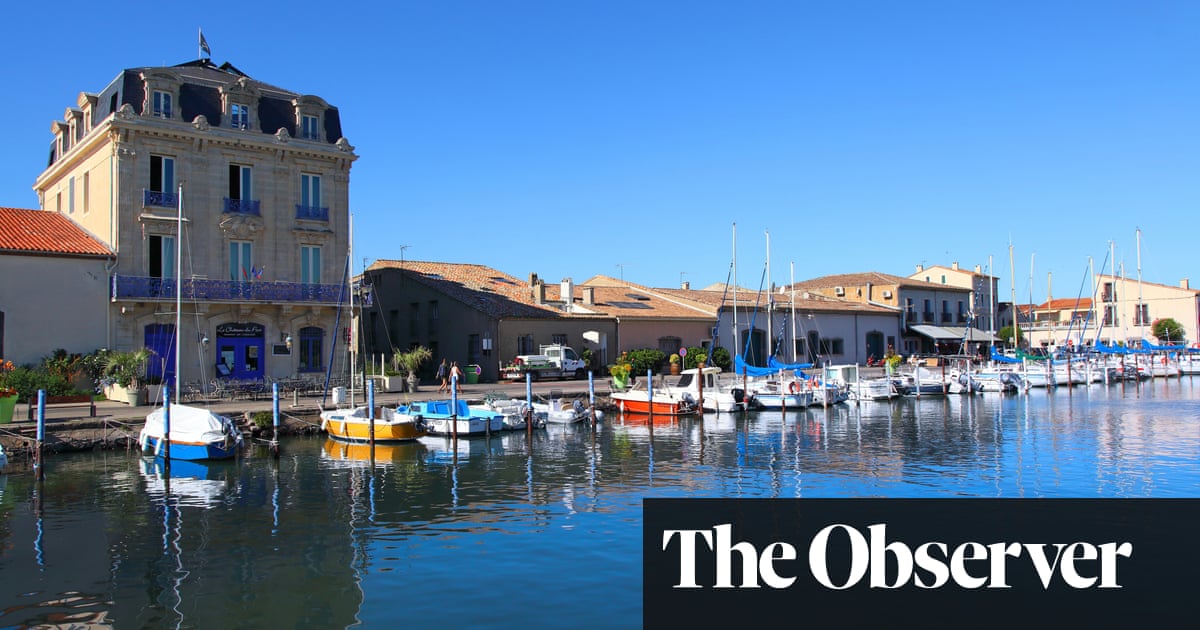
ew people realise that England has fragments of a globally rare habitat: temperate rainforest. I didn’t really believe it until I moved to Devon last year and started visiting some of these incredible habitats. Temperate rainforests are exuberant with life. One of their defining characteristics is the presence of epiphytes, plants that grow on other plants, often in such damp and rainy places. In woods around the edge of Dartmoor, in lost valleys and steep-sided gorges, I’ve spotted branches dripping with mosses, festooned with lichens, liverworts and polypody ferns.
You may have heard of England’s most famous fragment of temperate rainforest: Wistman’s Wood, in the middle of Dartmoor. With its gnarled and stunted oaks, its remote location marooned within a sheep-nibbled moorscape, and attendant tales of spectral hounds that inspired Sir Arthur Conan Doyle’s The Hound of the Baskervilles, it has an outsize reputation for somewhere so tiny in size: eight acres – about four football pitches.
Temperate rainforests, however, once covered a much larger swathe of England, and even larger parts of Wales and Scotland. A map produced by the academic Christopher Ellis in 2016 identified the “bioclimatic zone” suitable for temperate rainforest in Britain – that is, the areas where it’s warm and damp enough for such a habitat to thrive. This zone covers about 1.5m acres of England – around 5% of the country. For comparison, the entire woodland cover of England today is just 10%, and much of that is conifer plantations.
We have, in other words, lost a lot of our rainforests. I grew up with the Save the Rainforests movement of the 1980s and 90s, spearheaded in Britain by groups such as Friends of the Earth, which campaigned to stop deforestation in the Brazilian Amazon. When I was five years old, my mum organised a Save the Rainforests fundraiser; we painted a mural for our local library of colourful toucans, parrots and rainforest trees. Halting tropical deforestation remains utterly essential, a task made more vital by the rise of anti-green populists such as Jair Bolsonaro, the president of Brazil. But I did not realise growing up that we had already destroyed our own rainforests here in England.
Many of England’s rainforests were lost long ago, to the axes of Bronze Age farmers and medieval tin miners. Others were lost more recently to well-meaning but profoundly misguided forestry policies, which led to the felling of ancient, shrunken oaks in favour of fast-growing Sitka spruce. And in many places where rainforests would naturally flourish, overgrazing by sheep – whose sharp teeth hungrily eat up every sapling – has prevented their return.
But as I read with horror about this destruction, I started to realise that more fragments of our temperate rainforest have survived to the present day than I first thought. It wasn’t just Wistman’s Wood: rainforests cling on, too, along the whole valley of the Dart river (as the poet Alice Oswald reminds us, dart is Brythonic Celtic for “oak”), the Bovey and Teign rivers, and far beyond.
Some of this is simply due to the lie of the land. At Holne Chase, a rocky outcrop on the Dart where kayakers love to navigate the rapids, the scree-strewn cliffs and piles of boulders are too steep even for sheep. Oak, birch and holly flourish instead, sprouting from nooks and crevices between the rocks, carpeted in verdant mosses and that staple of temperate rainforest, the string-of-sausages lichen.
In other places, temperate rainforest is not just surviving, but thriving. At Lustleigh Cleave, a steep-sided common on the river Bovey that was barren pasture on Ordnance Survey maps a century ago, several hundred acres of rainforest has miraculously regenerated. A painting of the summit of Lustleigh Cleave dated 1820 shows it to be bare rocks, a shepherd grazing his flock at its base. When I visited Lustleigh last year, the same spot was so obscured by trees as to be unrecognisable. Common grazing rights appear to have been abandoned, together with the old practice of swaling – burning the gorse and purple moor-grass that carpets swathes of Dartmoor – allowing the woods to return.
Even Wistman’s Wood, so often portrayed as a stunted, moribund relic of the ice ages, has increased significantly in size since the late-Victorian period. Comparing photographs of the wood taken when Jack the Ripper was terrorising London with today’s Google Earth imagery shows a habitat that has grown dramatically, both in extent and in the size of the trees. Our forgotten rainforests are not just a primeval Lost World: they are also living, breathing and reproducing. As Jeff Goldblum memorably intones in Jurassic Park: “Life … finds a way.”
Excited by these discoveries, I recently decided to start a blog, Lost Rainforests of England, and tweeted a request for others to add to a map of the country’s surviving fragments of temperate rainforest. I was bowled over by the response: less than a month after starting it, the blog has had over 10,000 views, and I have been sent almost 100 potential rainforest sites, from the Lake District to Exmoor, from forgotten valleys in the Yorkshire Dales to secluded combes on the Devon coast. If you think you’ve found a temperate rainforest near you and want them added to the map, please send me your submissions and tweet me your photos.
Mapping what survives is only the first part of this project. The next phase is to attempt to restore our lost rainforests to something approaching their former glory. That process is already under way in Scotland and Wales, where charities and alliances have formed to protect and rejuvenate their diminished rainforest habitats. (England, as ever, seems to be lagging behind.)
I’m under no illusions that such an undertaking would be easy: in fact, it could be a lifetime’s work. It would require identifying not only the surviving fragments of rainforest, but also who owns them and the land surrounding them; persuading the various landowners, tenant farmers and commoners to cease overgrazing such land, setting it aside for the rainforest to naturally regenerate; and identifying sources of funding to either incentivise the farmers to do that, or buy the land outright.
The government has a major role to play in restoring England’s lost rainforests. It could use its forthcoming England Tree Strategy to unlock funding for such an endeavour. It could instruct the Forestry Commission, which wrought such destruction on our temperate rainforests in the 20th century, to repair them in the 21st. And it could use the opportunity of the forthcoming G7 Summit in Carbis Bay, Cornwall – which just so happens to be taking place right next door to a fragment of temperate rainforest – to commit the rich world to renewing our damaged ecosystems. Doing so would rebuff wreckers such as the president of Brazil, who refuse to rein in deforestation by pointing out that the rich west profited from doing that for centuries. If we’re to do this, it will take a popular movement – not just to save the rainforests of the Amazon, but to restore the rainforest at home, too.
So the next time you go for a walk in the woods and spot ferns growing from branches, lichen sprouting like coral and tree trunks bubbling with moss, you may well be walking through one of this country’s forgotten rainforests.












